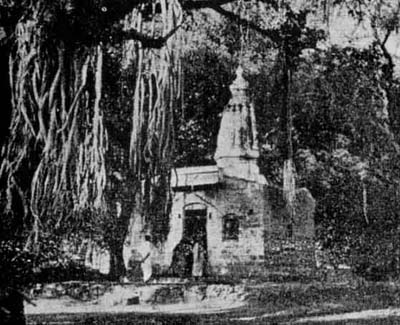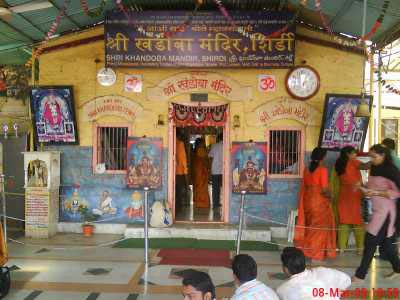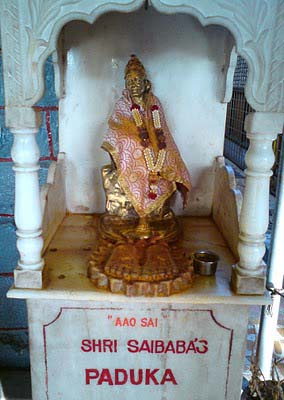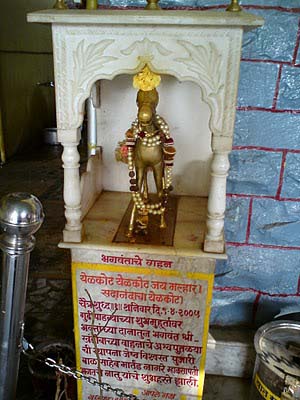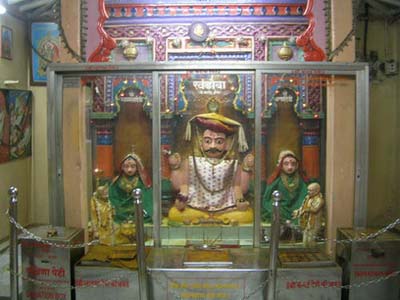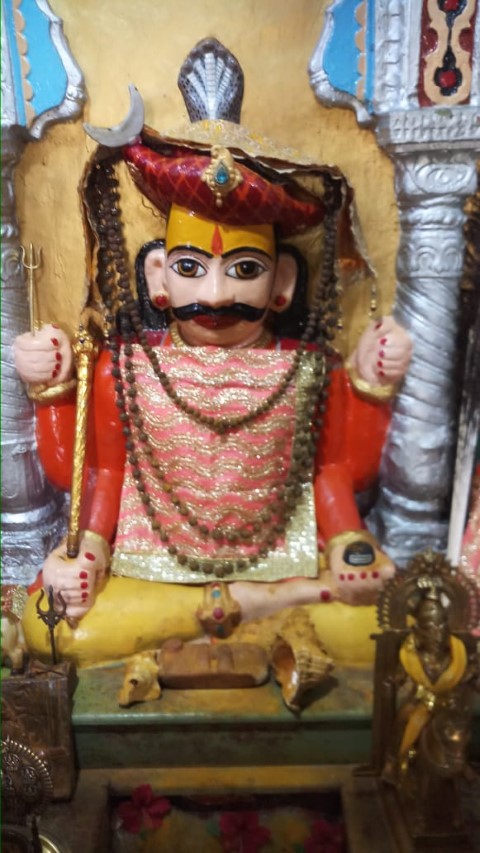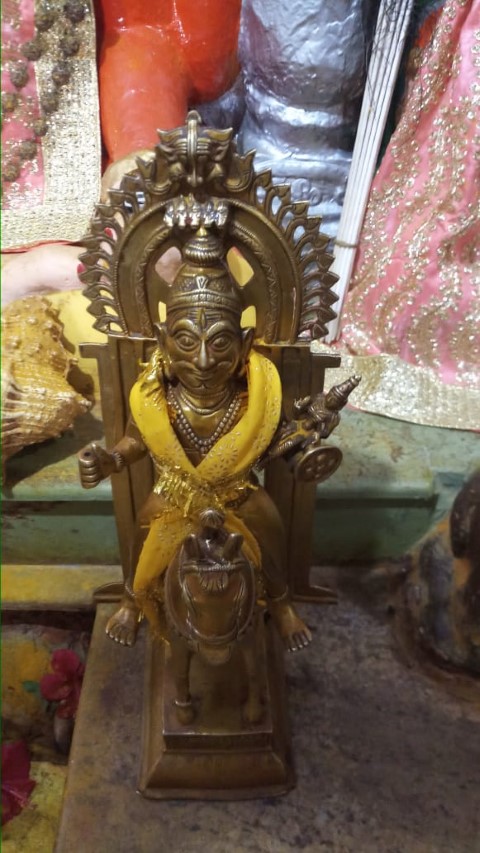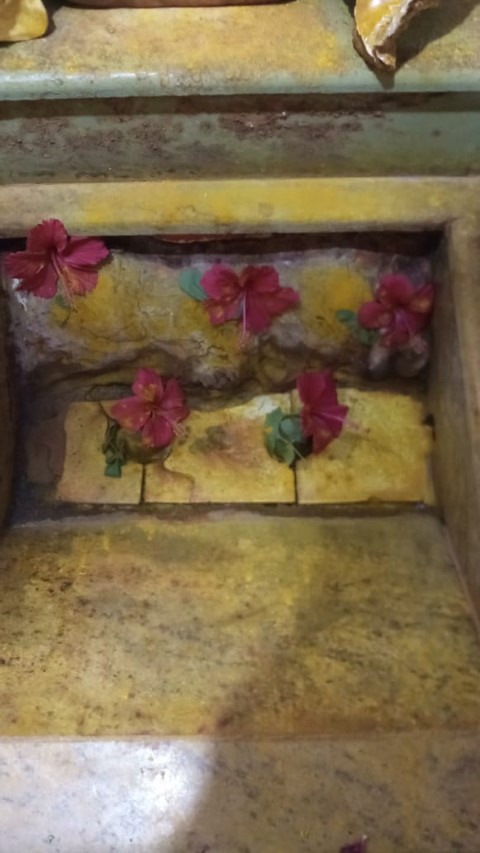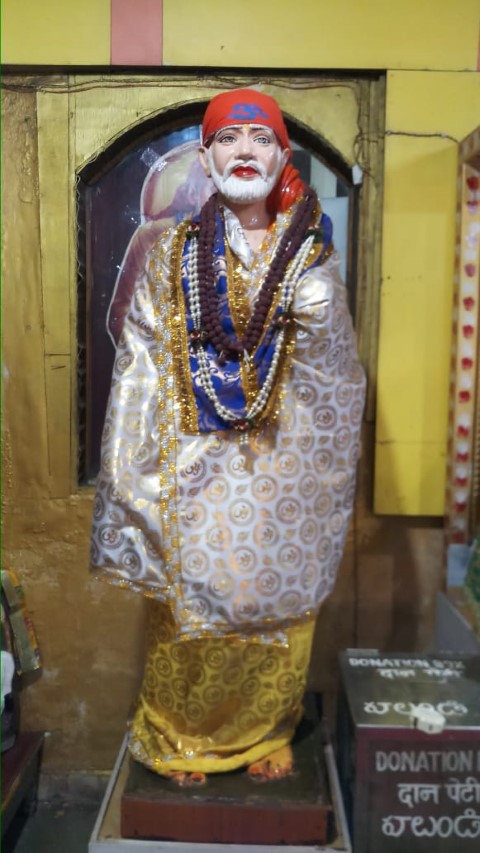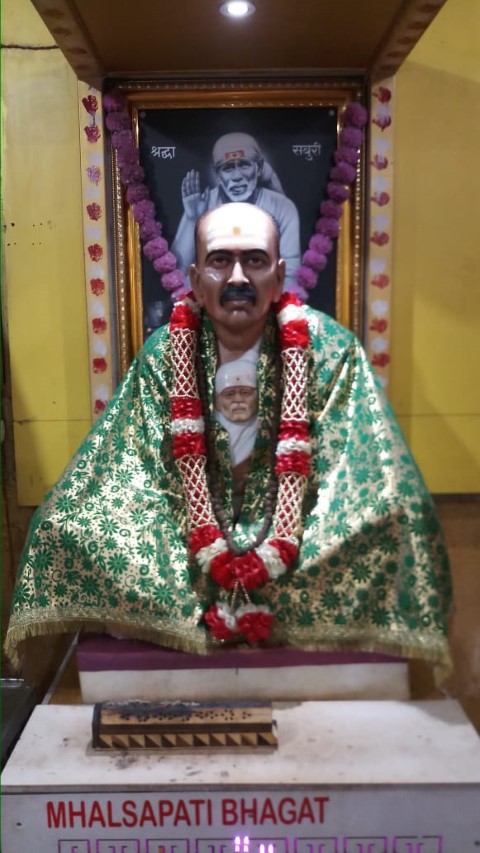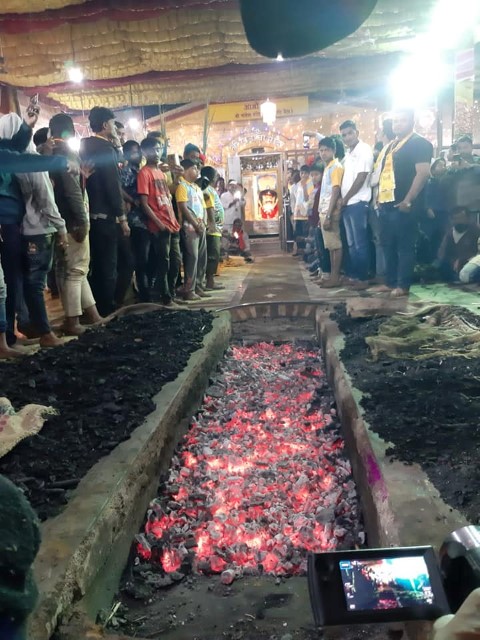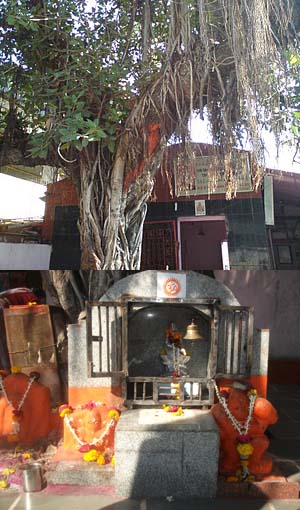KHANDOBA MANDIR
This temple is more than 500 years old. The exact date of construction is not known. This small temple is situated opposite to the Bus Stand and adjacent to Sainath Hospital. Khandoba, is an incarnation of Shiva and is the presiding deity (Kul Devata) of Maharashtra. Mhalsapati was the priest of this temple.
Old Picture of Khandoba Mandir
New Khandoba Mandir Mhalsapati was performing puja in this temple, when Baba came with Chand Patil's marriage party, Mhalsapati came out of the temple and greeted Baba saying “Aao Sai”. Then Mhalsapati did namaskar and seated the fakir with respect. After he completed the puja, Baba and Mhalsapati smoked and shared a chillim between them. Then he took Baba to the village and introduced him to Kashiram Shimpi and Appa Jagle (Refer Shiladhi written by Dr.Keshav B Gavankar). Since then the villagers started calling him as “SAIBABA”.
Later Baba went to the temple and said it was a fit place for a fakir's residence because of the solitude. Mhalsapati objected saying that “no Muslim should get into his Hindu temple” (Refer Sai Satcharitra Chapter 5). Then Mhalsapati and Kashiram requested Baba to stay in the Masjid and looked after his needs. Mhalsapati was attracted to Baba's divinity that he hardly left his side. Baba asked Upasani to sit quietly in this temple for three and half years for his spiritual advancement and Baba would do the rest. In 1929 Upasani reconstructed this temple with bricks and mortar and installed a Gopuram (temple spire) in gratitude to Baba for showering his grace. The temple is 15 ft long and 15 ft in breadth. In the centre is a stone idol of Khandoba. Mhalsa is on the left and belonged to the Vaishya caste. Banai is on the right, and belonged to a shepherd’s family. They are incarnations of Parvati and Ganga.
Banai-Khandoba-Mhalsa in the Sanctum Sanctorum
Two Shiva Lingas are in front of Khandoba; a tiger in front of Mhalsa, and a dog is in front of Banai. The temple’s wooden door is fitted with grills so the devotees can have darshan of the deities even after the temple door is closed. Two aratis are performed daily at 12 noon and at 6 p.m. on the festival of Champa Shasti, a grand ceremony is held there annually. This falls in Margashirsh Shudh Shasti (November-December). Many devotees after fervent prayer, walk on the burning coal that are kept in the 12’ long pit. This ceremony has been going on since 1850. The Pujari completes the ceremony by walking on the burning coal.
Champa Shashti Fire Walk Video - Courtesy:Shri.Sandip Nagare, Shirdi On Vijaya Dashami the ritual of Seemolanghan is performed at this temple. The mythology of Champta Shasti On the first day of Margashira Month Malhari Navaratri begins. From Margashira Shuddha Pratipat to Margashira Shuddha Shashti, the 6 day long Navaratri Festival is celebrated. It is also called by the name Khandoba Navaratri. This festival is celebrated with utmost enthusiasm and Devotion. The town of Jejuri also has a Mandir dedicated to Malhari. It is believed that on the auspicious day of Margashira Shuddha Shashti Lord Shiva took the form of Martand Bhairava and killed two demons "Mani" and "Mallhar". " Malhari Marthand is the incarnation of Lord Mahadev. Two demons Malhar and Mani were granted the boon of immortality by Lord Brahma. Then they become evil and killed people. Sages took refuge in Gods and sought their help. Lord Shiva reincarnated as Khandoba and battled the demons. Lord Shiva took the form of Martand Bhairava and marched with demons to Yelkot with his army of 7 crores. Martand Bhairav broke the chest of demon Mani and dropped him to the ground. Also the beheaded demon surrendered and wished to place his head at the feet of the Lord and also requested to put his form next to the Lord's idol. Lord Shiva said thathasthu and granted the last wish of Mani. Later, when Lord Marthand Bhairav defeated demon Malhar, he completely surrendered to the Lord and requested that his name be added before the name of the Lord. As such, Martand Bhairava agreed. Since then He came to be called as Malhari Martand. Khandoba’s wife Champa (alias Mhalsa) prayed for her husband’s victory. On the sixth day the demons were killed. Champa happily gave a huge feast of brinjal bharit and bhakri made of bajri. Since then it is called Champa Shasti. Lord Khandoba repented, so he set up a long Agni Kund and walked back and forth on the burning coal barefoot. This is the blessed Banyan tree that gave shade to Baba and the marriage party of Chandbhai Patil. This tree is to the right upon entering the compound. A small parapet is built around it. A small shrine of Baba’s Padukas is placed there to commemorate the wonderful return of Baba to Shirdi. The party alighted at the foot of this Banyan tree in Bhagat Mhalsapati's field near Khandoba Mandir. Members of the party descended one by one and the Fakir also got down. Bhagat Mhalsapati saw the young Fakir and said "Aao Sai" others also addressed Him as Sai and henceforth He became known as Sai Baba (Refer Sai Satcharitra Chapter 5)
In Shirdi, Vat Purnima is performed around this tree. In the Skanda Purana this story is given. Savitri’s husband Satyavan lost his life as she was late in coming to meet him. Then she pleaded with Yama to give back her husband’s life and succeeded. So girls of marriageable age and married women perform this ritual to get a good husband and for their longevity. In this ceremony, women tie a white thread around the tree during ritual circumambulation. Location link to Khandoba Mandir is as follows: https://maps.app.goo.gl/6cnqZ4Y82U6RkLUaA
|
(Source: Ambrosia in Shirdi, Baba’s Gurukul by Vinny Chitluri & Shri.Sandip Nagare Ji, Shirdi). |
|---|
